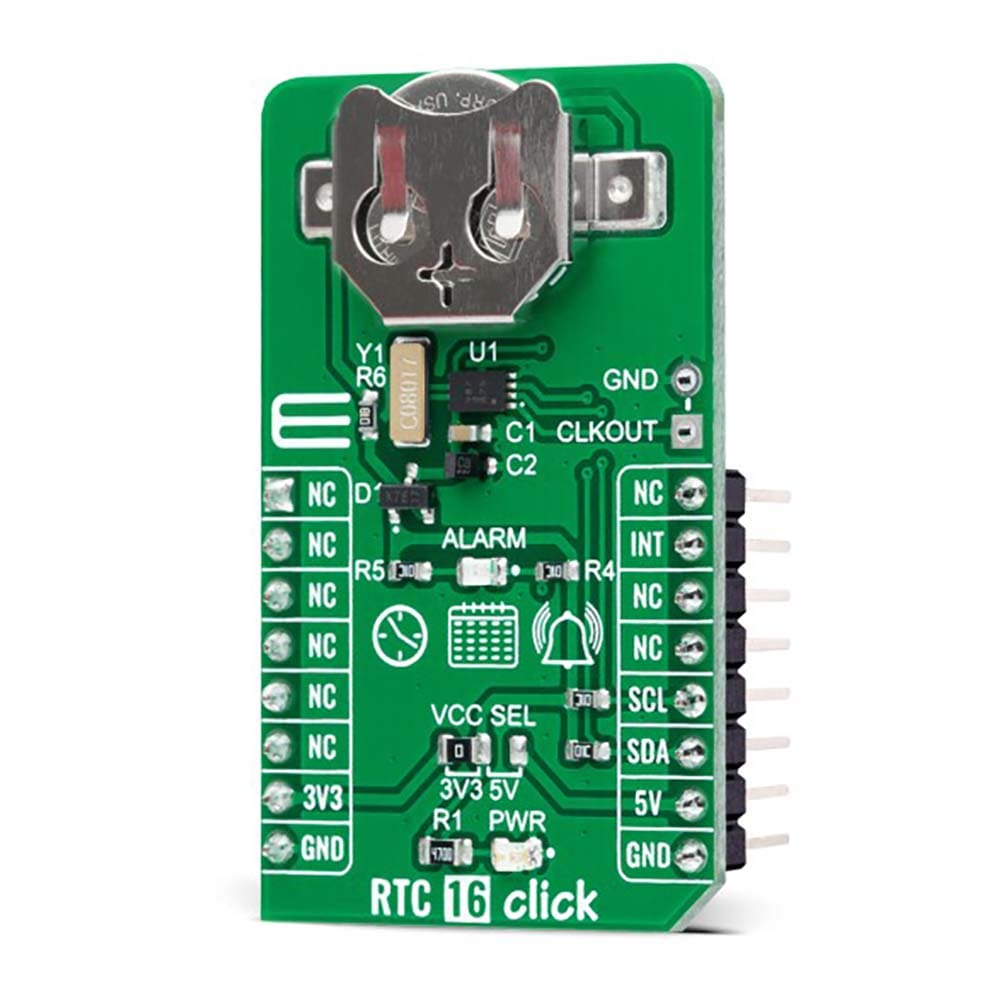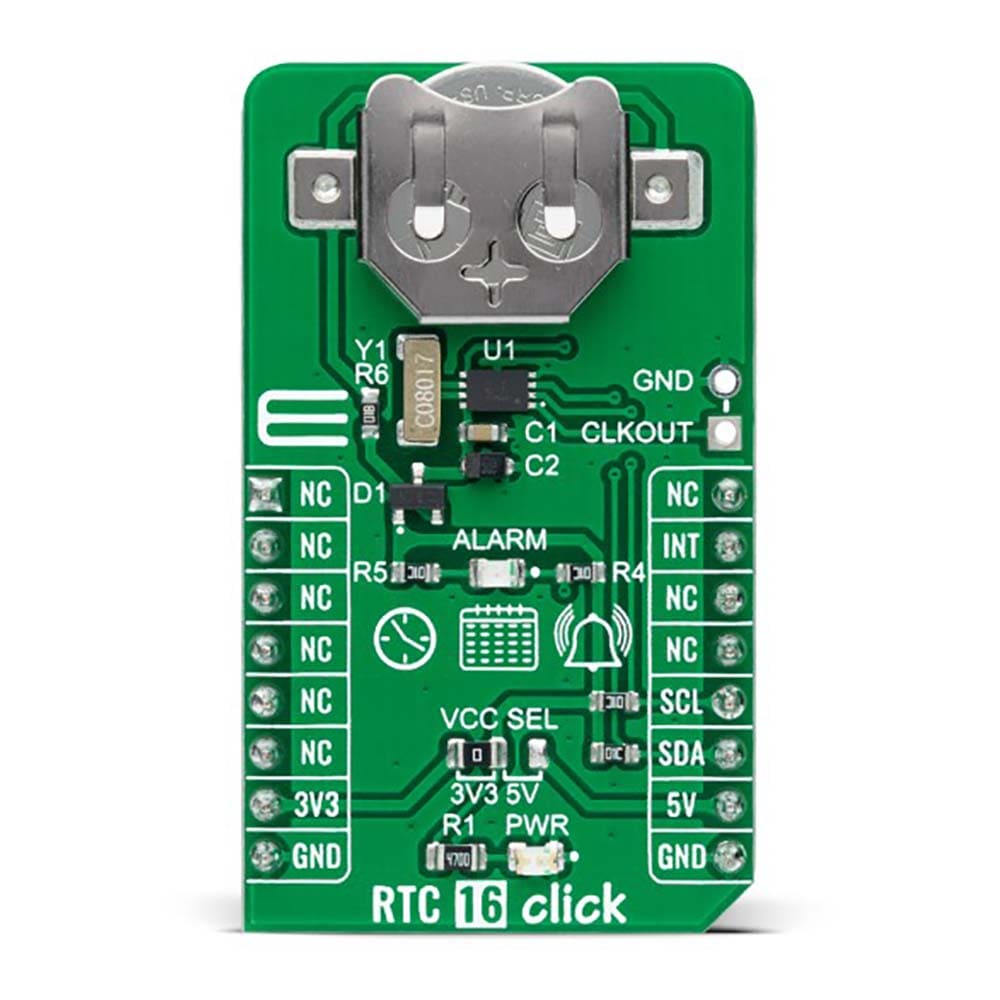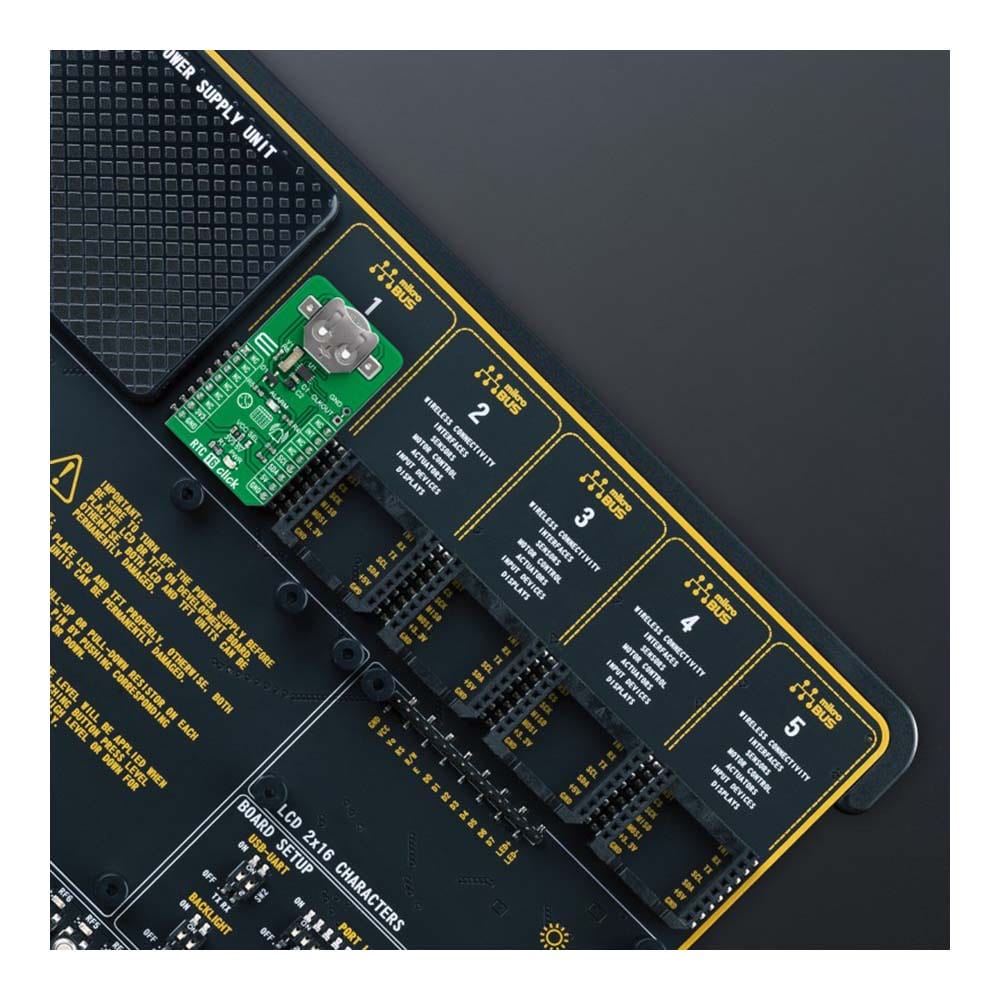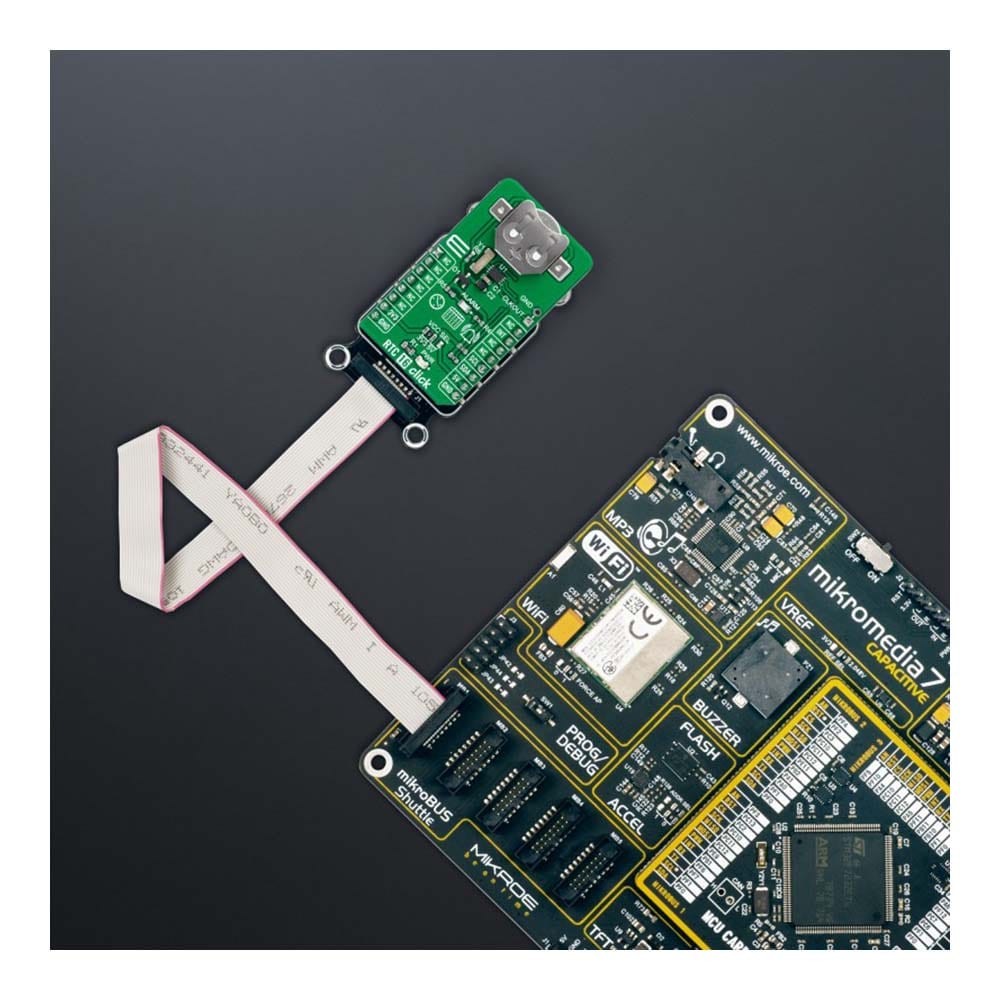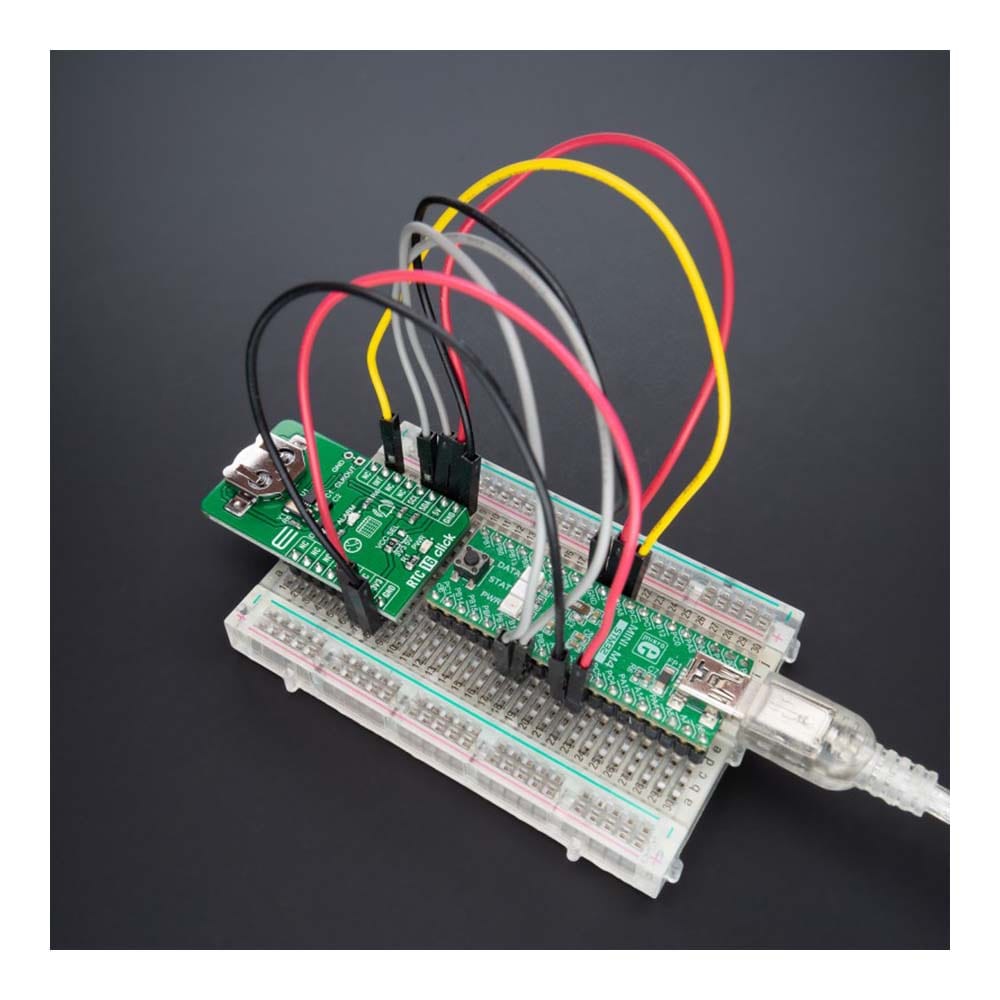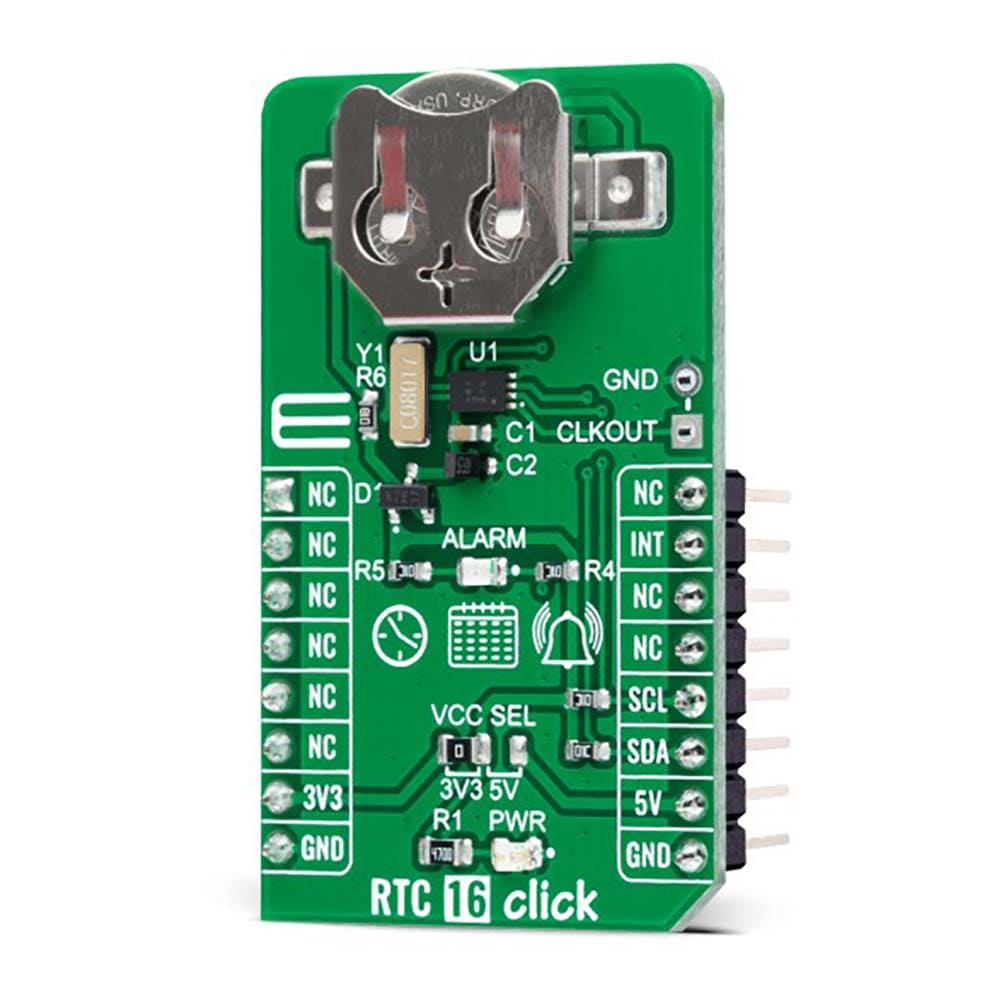
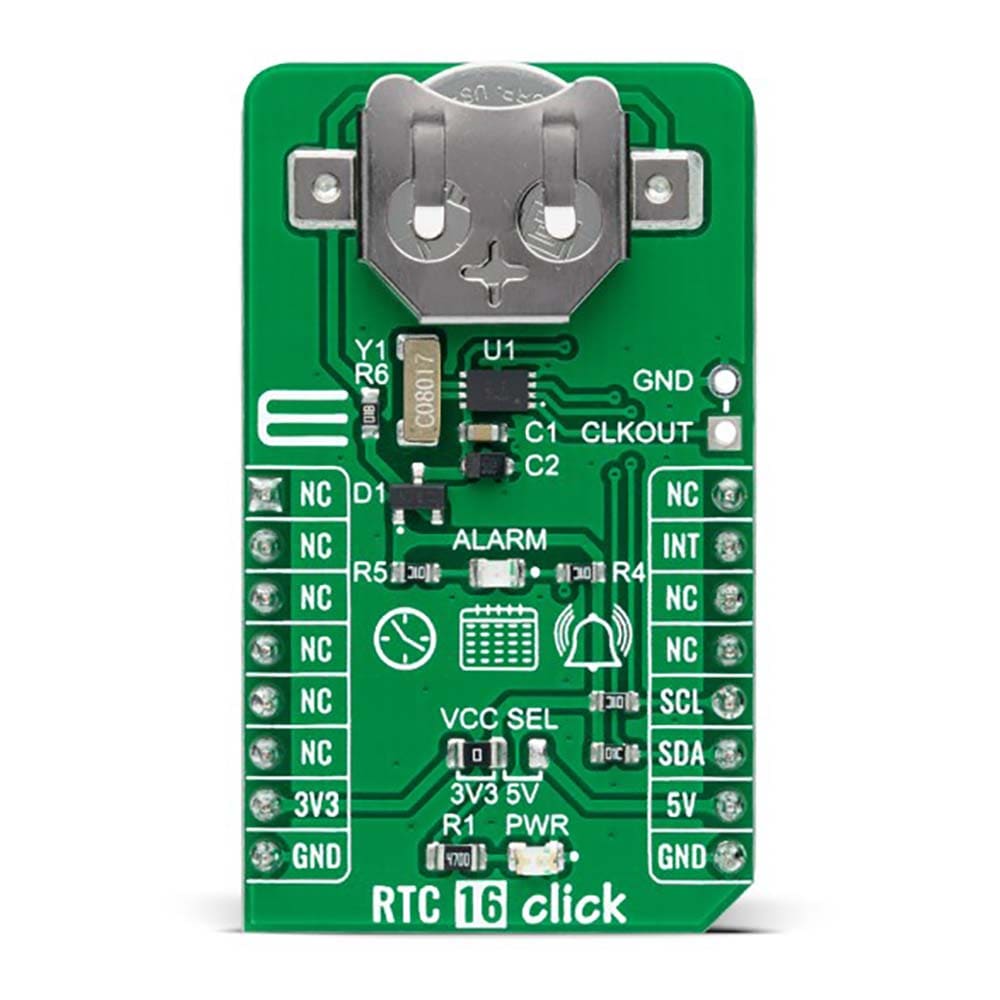
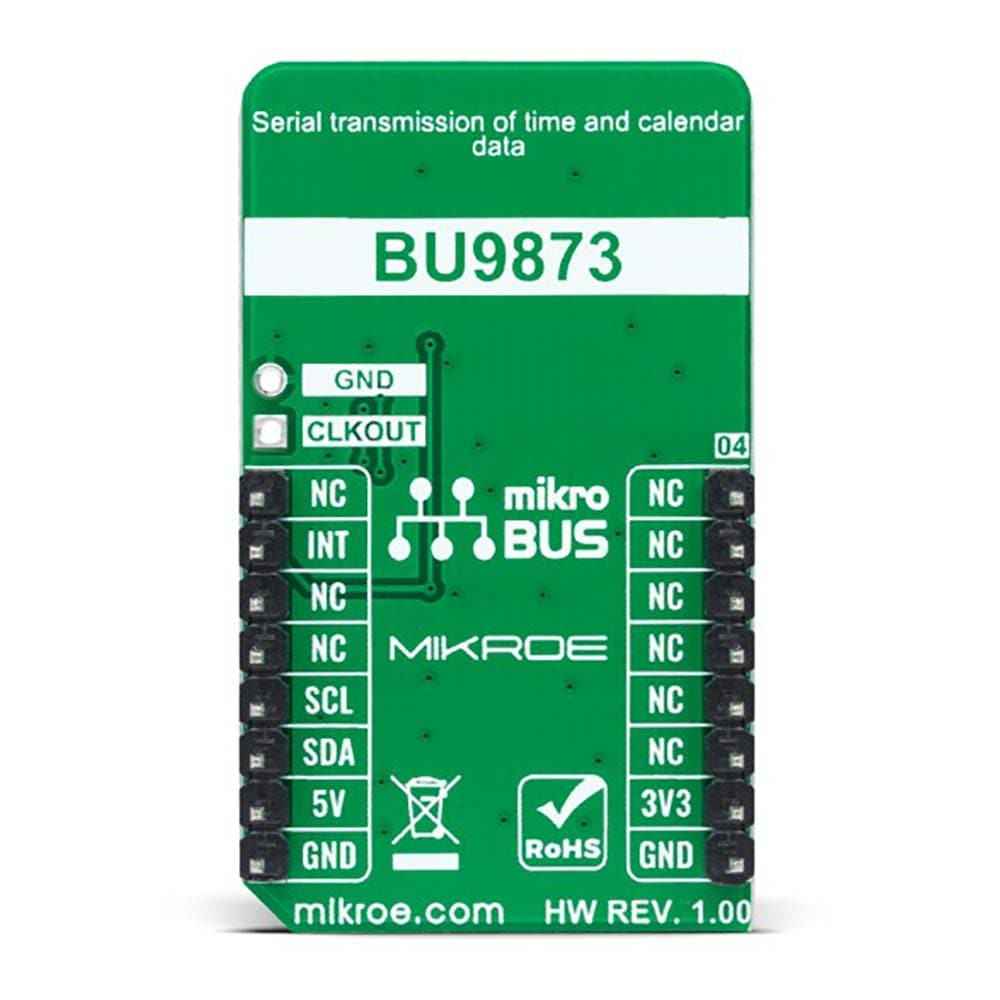
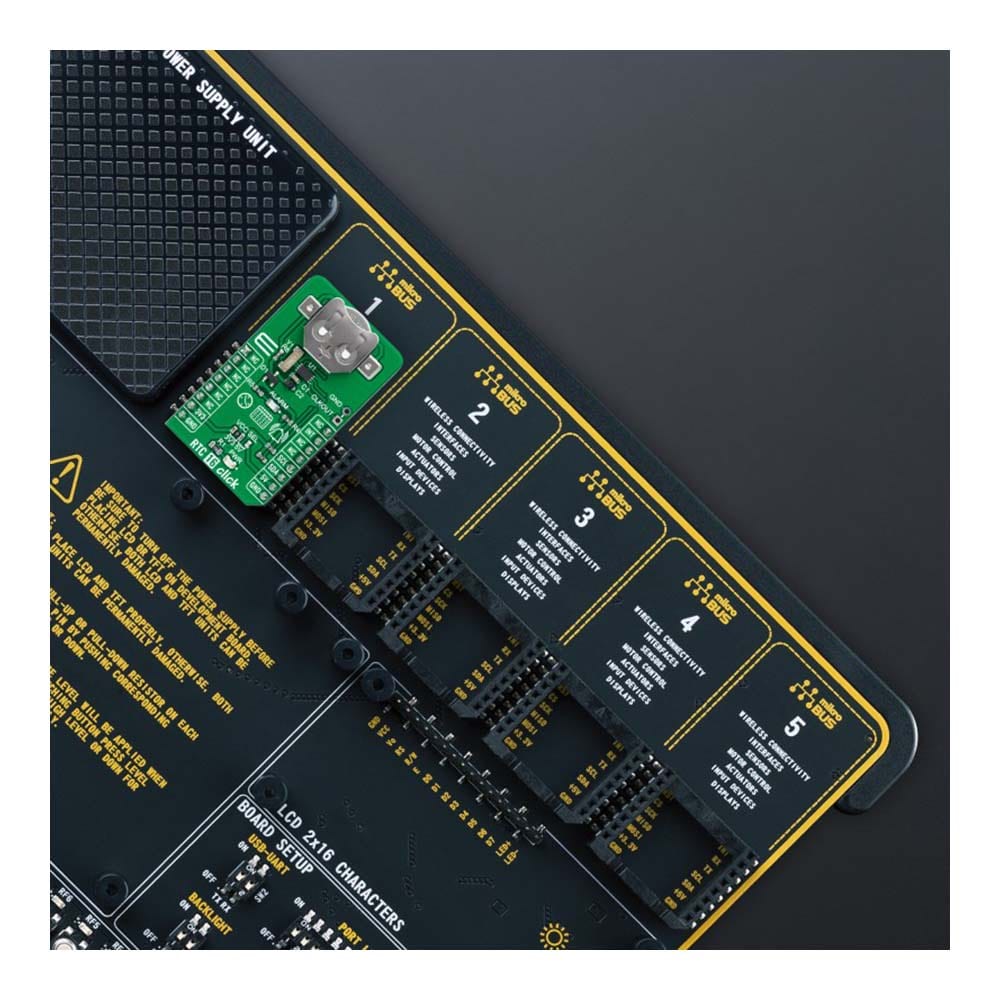
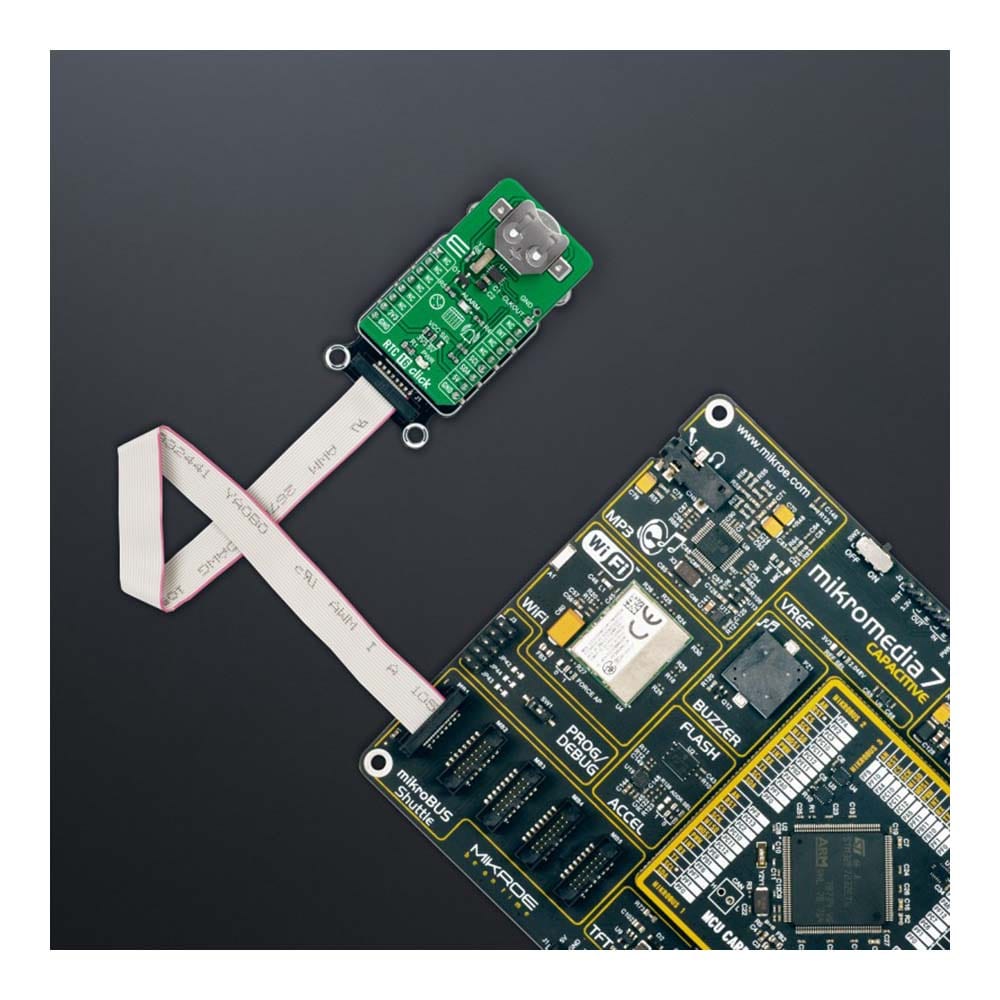
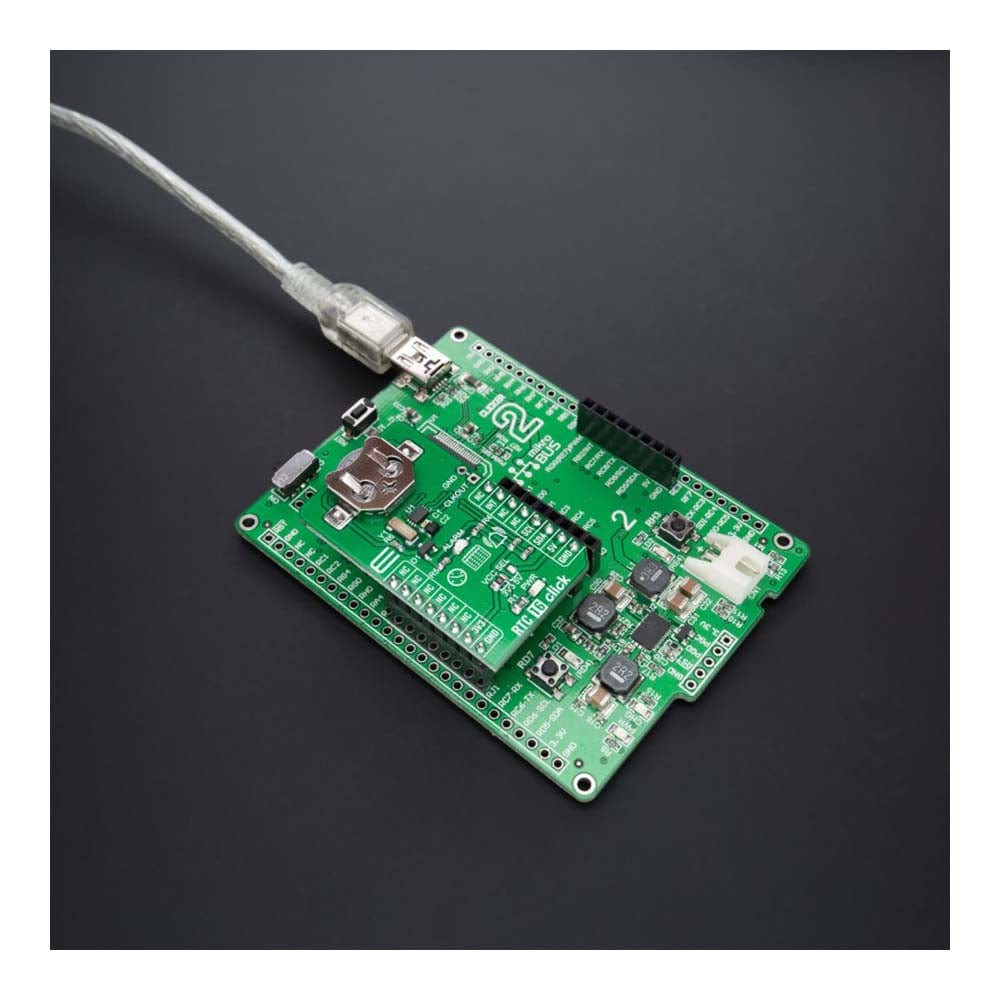
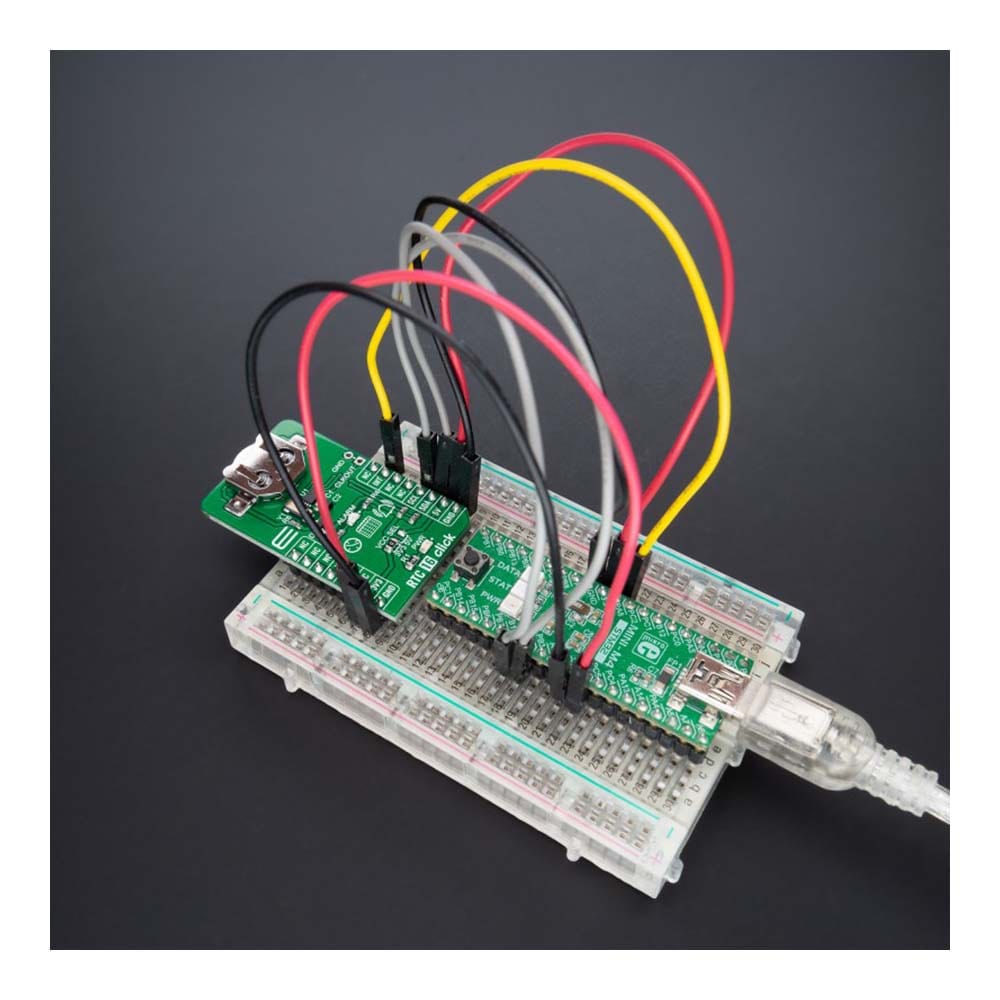
Key Features
Overview
The RTC 16 Click Board™ is a compact add-on board that accurately keeps the time of a day. This board features the BU9873, a CMOS real-time clock with a built-in interrupt generation function from Rohm Semiconductors. The BU9873 provides year, month, day, weekday, hours, minutes, and seconds based on a 32.768kHz quartz crystal. This RTC is connected to the MCU through an I2C interface and configured to serial transmit time and calendar data. It also has an alarm function that outputs an interrupt signal to the MCU when the day of the week, hour, or minute matches the preset time. This Click board™ is suitable for various time-keeping applications, including daily alarms, metering applications, and others requiring an accurate RTC for their operation.
The RTC 16 Click Board™ is supported by a mikroSDK compliant library, which includes functions that simplify software development. This Click board™ comes as a fully tested product, ready to be used on a system equipped with the mikroBUS™ socket.
Downloads
La carte RTC 16 Click Board™ est une carte complémentaire compacte qui permet de conserver l'heure exacte d'une journée. Cette carte est équipée de la BU9873, une horloge CMOS en temps réel avec fonction de génération d'interruption intégrée de Rohm Semiconductors. La BU9873 fournit l'année, le mois, le jour, le jour de la semaine, les heures, les minutes et les secondes sur la base d'un cristal de quartz de 32,768 kHz. Cette RTC est connectée au MCU via une interface I2C et configurée pour transmettre en série les données de temps et de calendrier. Elle dispose également d'une fonction d'alarme qui envoie un signal d'interruption au MCU lorsque le jour de la semaine, l'heure ou la minute correspond à l'heure prédéfinie. Cette carte Click board™ convient à diverses applications de chronométrage, notamment les alarmes quotidiennes, les applications de mesure et d'autres applications nécessitant une RTC précise pour leur fonctionnement.
La carte RTC 16 Click Board™ est prise en charge par une bibliothèque compatible mikroSDK, qui comprend des fonctions qui simplifient le développement logiciel. Cette carte Click Board™ est livrée sous la forme d'un produit entièrement testé, prêt à être utilisé sur un système équipé du socket mikroBUS™.
| General Information | |
|---|---|
Part Number (SKU) |
MIKROE-5083
|
Manufacturer |
|
| Physical and Mechanical | |
Weight |
0.02 kg
|
| Other | |
Country of Origin |
|
HS Code Customs Tariff code
|
|
EAN |
8606027389085
|
Warranty |
|
Frequently Asked Questions
Have a Question?
Be the first to ask a question about this.

